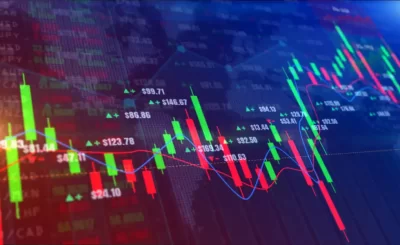When it comes to forex trading, volume is one of the most critical factors. After all, the volume determines how strong a currency is on the global market. We’ll look at different volume indicators and their relevance to forex trading. We’ll discuss how you can use these indicators to make more informed trading decisions. So, if you’re interested in learning more about volume indicators and their role in forex trading, keep reading.
Volume indicators – what they are and how they work
A volume indicator is a technical tool that measures the number of shares or contracts traded in a given period. They can be used for all markets, and they are particularly relevant to forex trading. (For more information on forex trading and currency spreads, see https://www.home.saxo/en-sg/products/forex.) Day traders typically use it and short-term investors to decide when to buy or sell an asset.
There are two ways to measure volume:
The tick volume is considered more reliable than the actual volume because it’s less susceptible to manipulation. However, both measures can be helpful in different ways.
The tick volume is a good indicator of the activity of market participants, and it can help you see whether there are more buyers or sellers in the market at any given time. On the other hand, the actual volume is a good indicator of the strength of a currency. If the actual volume is high, there is a lot of interest in the currency, and it’s likely to be strong on the global market.
How volume indicators can be used in forex trading
There are many different ways to use volume indicators in forex trading. For example, you can use them to:
- Identify market trends- If the volume increases, it’s a good sign that the current market trend is strong and likely to continue.
- See when a currency is overbought or oversold- If the volume is high and the price is rising, it may be a sign that the currency is overbought and due for a correction. Conversely, if the volume is high and the price is falling, it may signify that the currency is oversold and due for a rebound.
- Confirm other technical indicators- You can use volume indicators to confirm signals from other technical indicators, such as moving averages or support and resistance levels.
- Create custom indicator settings- Some trading platforms allow you to create custom indicator settings, and you can tailor the indicator to your trading style and preferences.
The benefits of using volume indicators in forex trading
There are many benefits to using volume indicators in forex trading. For example, they can help you to:
- By giving you an idea of how active the market is, volume indicators can help you make more informed decisions about when to buy or sell a currency.
- By tracking changes in volume, you can get an early indication of any shifts in the market that might impact your trading strategy.
- You can use volume indicators to confirm signals from other technical indicators, such as moving averages or support and resistance levels.
- By monitoring the volume, you can better manage your risk by entering and exiting trades at better times.
Drawbacks of using volume indicators in forex trading
There are also some drawbacks to using volume indicators in forex trading. For example:
Volume can be misleading. The volume doesn’t always give an accurate picture of the market. For example, a low volume could mean fewer participants in the market rather than indicating a lack of interest in the currency.
It can be difficult to interpret. Volume is just one piece of information that you need to consider when trading forex. If you’re not experienced using volume indicators, it can be easy to misinterpret the data and make poor trading decisions.
The platform allows you to create custom indicator settings; you can tailor the indicator to your trading style and preferences.
Some common volume indicators that traders use
There are many different volume indicators that traders use. Some of the most common include:
- On Balance Volume (OBV) – This momentum indicator tracks changes in volume to identify whether a currency is being bought or sold.
- Volume Price Trend (VPT) – This indicator uses both price and volume data to identify buying and selling pressure in the market.
- Chaikin Money Flow (CMF) – This indicator uses price and volume data to measure the amount of money flowing into and out of a currency.
- Ease of Movement (EOM) – This indicator measures the relationship between price and volume to identify periods of high trading activity.








